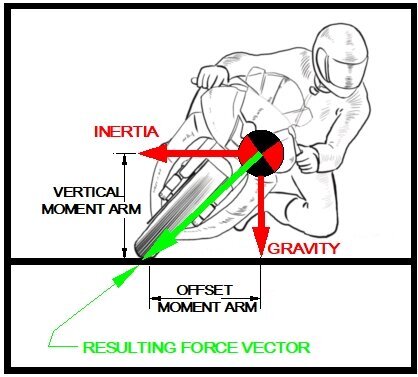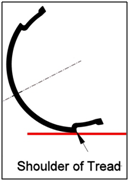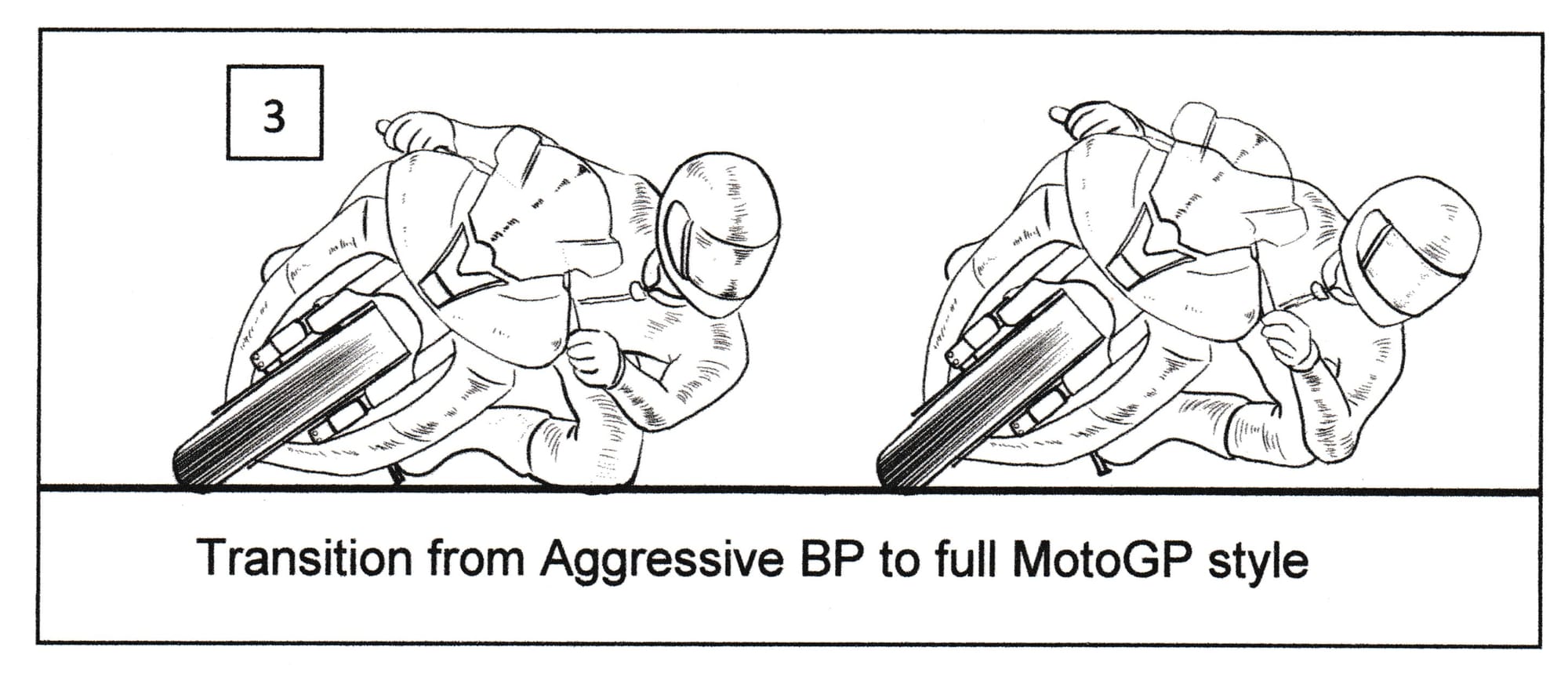Body Position Basics

Motorcycle riding position is currently a “Hot Topic”. There are many theories about proper riding position or what is popularly called “Body Position” (BP). This holds true especially when riders are talking about BP for racing and track days. There are a myriad of misconceptions or at least inaccurate explanations of the effect of the rider’s posture while riding. This article is just an overview of the basics of BP. Future articles will cover the more detailed specifics of BP and the science behind it.
In the 70’s when we first started to use different styles of riding posture we simply called it “Hanging Off”. We used it to accomplish a specific task. The style of hanging off has evolved and gotten more aggressive over the past couple of decades but, it is still used to accomplish the same specific task. Altered BP is a very useful tool for sport bike riding “WHEN” it is needed. Only, when a bike reaches a certain set of limitations, will the use of altered BP have any benefit.
There are two main limits of performance that BP will address.
1. The first and most common limit is ground clearance. Every motorcycle has a mechanical limit of lean angle before the hard parts of the chassis will start to drag on the ground. If the chassis parts drag too much then the tires will actually be levered off the ground and cause an exciting moment for the rider or even a crash.

2. The second limit that must be addressed is the edge or shoulder of the tread of the tire(s). This area is too small and weak to support the weight and power of the bike. This could cause the front tire to wash out and/or the rear tire to slide and/or spin up under hard acceleration.

When and only when either or both of these problems are about to be encountered is changing BP useful and worth the riders’ efforts.
The only thing that Body Position accomplishes is a slight reduction in the lean angle of the bike’s chassis relative to the horizon.
This reduction in lean angle from BP,
1. Will gain more ground clearance
2. Will get the tire up off of its shoulder
If the tire is not on the shoulder and has even a small Chicken Strip, then more aggressive BP,
1. Will Not increase the size of the contact patch
2. Will Not increase traction
It is the speed and radius of the turn that uses up traction. Artificially reducing the lean angle with BP does not reduce the cornering forces felt by the tire and does not give more traction.
If the bike is not at either of these limits, then BP will have no beneficial effect. There may be some improvement in the rider’s comfort level while cornering, but mechanically it is unnecessary.
The technique of Body Position is not an “All or Nothing” line of reasoning. It should be applied as needed. Riders should use just enough BP to accomplish the desired results. Way over aggressive BP is was waste of effort and unnecessary.
I have seen numerous times, when a new track rider first tries to adopt an over aggressive BP, he forgets everything else and his line, braking markers, turning points etc. all go out the window. All of which are way more important than over aggressive BP.
For clarification I will use four versions of BP, from Standard to Full MotoGP.
- Standard Body Position.
- Conventional Body Position.
- Intermediate Body Position.
- Full MPG Body Position.

Obviously, when a rider is traveling in a straight line, as seen here (A), no altered BP is required. The aggressive BP shown here (B) is obviously a waste of time and energy by the rider. Even in an average turn with the bike leaned over as in (C), the rider is nowhere near running out of ground clearance or on the shoulder of the tire. So, using the aggressive BP shown in (D) is once again a waste of energy and time.

When a rider get fast enough to be leaned over this far (E) and will never get any faster then, he could still ride with the standard riding posture. But, if he plans to eventually get faster, he will need to start to seriously consider applying, at least, some “Conventional” style alternate BP (F). 
Going a step further, if the rider is cornering fast enough and leaned over as much as shown in (G), it is obvious he is out of ground clearance and probably also up on the shoulder of the tire. It is now, if it's not already too late, absolutely necessary for the rider to adopt an effective BP, shown in (H) to straighten the bike up somewhat.

The progression of more and more aggressive position is as follows.
The first step is from standard riding position to the initial “Conventional BP”. When the rider is approaching the limits of lean he must straight the bike up with altered BP, as shown in figure #1. Notice that when the rider moves some of his weight to the inside, the bike straightens up a little and gains a little extra ground clearance. This should also be enough to keep off the shoulder of the tread.

Because human beings carry their center of mass around their navel (belly button), moving the midsection (butt & hips) off center will give the biggest weight shift. This conventional BP involves moving his midsection and hips as far off center as needed and knee out. Keeping the head up and just inside of the center line of the bike, while still maintaining a good arm position. Arm position is often the forgotten detail. This is the most common and comfortable BP used by racers.
Dragging your knee on the ground is totally optional and not necessary. But it does look good in photos.
If the rider then improves his cornering speed and gets fast enough, he will eventually use up all of the extra ground clearance even from the initial Conventional BP. At this point he is going as fast as he can. To enable going faster, he must adopt an even more aggressive or Intermediate BP, as shown in figure #2. This is accomplished by moving more midsection and some head and shoulders off center.
Two things to notice in the drawing one is the extra ground clearance. Second, look at the rider’s eye position it is level with the horizon. I highly recommend you keep your eyes as level as possible. The reason for level eyes is another whole discussion.

The last step is when the rider is extremely fast and has used up all the lean angle limits again. As shown in figure #3. The rider has once again started to drag hard parts. He now needs to move the last bit of his body weight to the inside. With his midsection and hips already moved as far off center as he can, the only weight he has left to move is his head and shoulders.

I save this as the last step because of the sacrifices the rider has to make to obtain this radical Full MotoGP BP. The sacrifices are
- Arm position
- Eye position
Hanging off the bike, this far, requires the rider to adopt and awkward arm position, which can result in a sacrifice in feedback from the handlebars and reduced precision of inputs to the bars. If in this aggressive BP, the rider needs to hang on to the handlebars to keep from falling off, then he's doing it wrong. Also, the rider would almost need to put his neck in an awkward position to keep his eyes level. I still recommend keeping the eyes as level as practical.
Remember us as much BP as needed but, you don’t have to apply full MotoGP style when you are just starting out. As in figure #4, there is no need for this rider to even use any BP, let alone, be over aggressive in his body position. Besides, he just looks like “Walter Mitty” goes racing.

For more information about the evolution of BP over the decades also read.